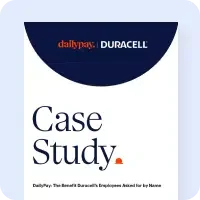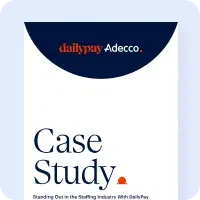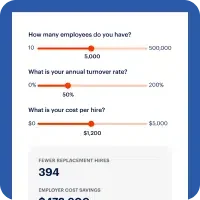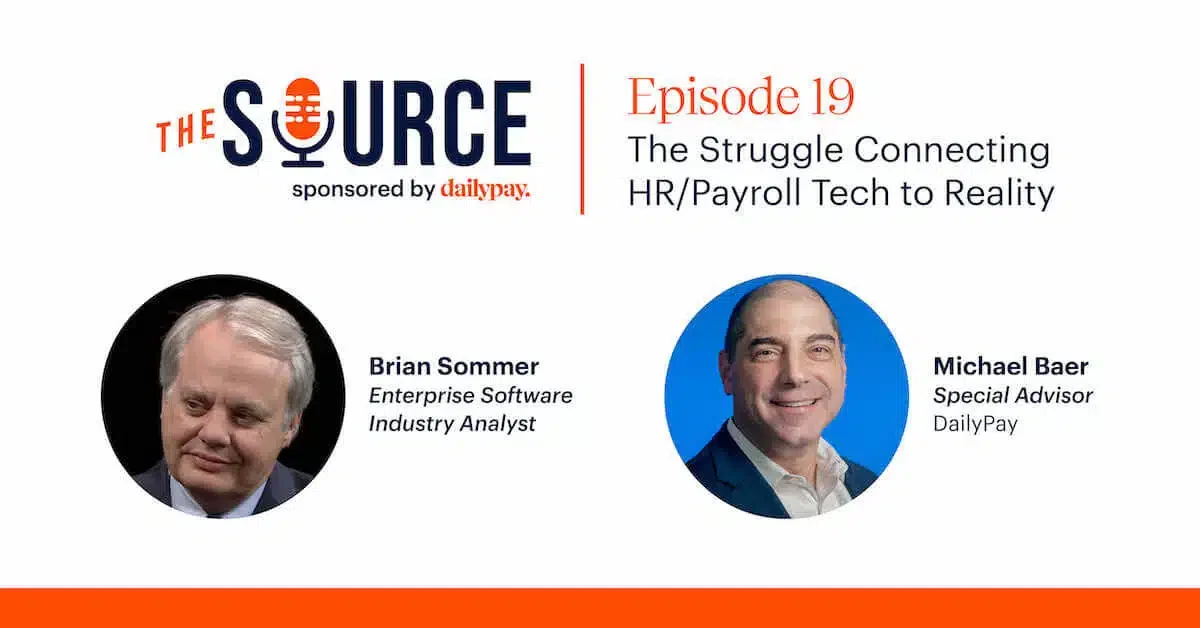Many who analyze HR and Payroll technology come away amazed with the advances in capabilities. For enterprise software industry analyst Brian Sommer, while these new tools show promise, there remain major shortcomings in the applications that force employers to develop expensive workarounds. In this Source by DailyPay podcast, Sommer covers, among other things, the danger of having the software managed by people who do not fully understand the ramifications of decisions made in attempting to streamline a process or processes, the pitfalls of poor customer service, and the problem with leadership succession in technology companies.
About Our Speakers

Brian Sommer is an enterprise software industry analyst who began his career in the field by re-writing a payroll/time-reporting system for a fast food chain, and subsequently reworked and implemented numerous application software systems. Brian went on to advisory services with Accenture, eventually heading up that group’s Global HR and Finance Centers of Excellence. He is a sought-after thought leader who now covers the Enterprise Resource Planning, finance and HR sectors for Diginomica and writes for other publications. He was named a Top 100 HR Tech Influencer by Human Resource Executive for 2019 and 2020. Brian has also published books on digital transformation, software selections and technology negotiations.

Michael Baer is the host and executive producer of The Source podcast. Michael previously oversaw domestic and international payroll news and analysis at Bloomberg Tax, previously BNA.
In a career spanning three decades, Michael transformed the role of managing editor, becoming an information services leader who managed every aspect of world-class global products and platforms. He directed a team of editors and writers who were charged with translating complicated tax and labor laws into English so non-lawyers could easily understand and apply them, and was integral in organizing and placing that content on easy-to-access web platforms, resulting in the highest net promoter scores the company had seen for any of their offerings.
Michael has been a frequent public speaker for conferences and webinars, and now is the host of The Source, sponsored by DailyPay.
In this podcast you will learn about…
- The disconnect between the promise and delivery of new HR and payroll technology
- How artificial intelligence applications can be used . . . and misused
- Why customer service to back up the tech tools is lacking
- How succession in tech leadership stymies creativity
Welcome to The Source, the definitive destination for timely and informative regulatory updates and issues in the on-demand pay industry.
The Source is brought to you by DailyPay, the industry leading technology platform, that’s creating the world’s next financial system by rewriting the invisible rules of money.
This material is for general information only. And the views expressed herein reflect only the views of the participants.
This program should be considered marketing material and should not be relied on as legal, tax, accounting, or regulatory advice.
And now let’s welcome the host of the source, Michael Baer.
Michael Baer:
Hello everyone, and welcome to The Source. The Source is sponsored by DailyPay, and this podcast provides insights into active and upcoming developments impacting the on-demand pay industry, HR, payroll, and financial technology, as well. And with special guests, we help clarify issues surrounding access to pay and the pay experience.
Michael Baer:
For today’s program, The Source is grateful to welcome HR and payroll enterprise software industry analyst, Brian Sommer. After beginning his career in the field by rewriting a payroll time reporting system for a fast food chain, and subsequently reworking and implementing numerous application software systems, Brian went on to advisory services with Accenture. Eventually, heading up that group’s global HR and finance centers of excellence.
Michael Baer:
He is a sought after thought leader who now covers the enterprise resource planning, finance, and HR sectors for Diginomica and other publications. He was named a top 100 HR tech influencer by Human Resource Executive, the past two years. Brian has also published books on digital transformation, software selection, and technology negotiations. So welcome, Brian.
Brian Sommer:
Glad to be here, Michael, and I hope you’re getting through the pandemic just fine.
Michael Baer:
Yeah. I think we’re coming out on the other side of this, and grateful for that too, so that’s wonderful. Well, you recently wrote an article about disconnects between employee data systems, specifically those provided by payroll services, that are hindering the ability of employers to timely and accurately share with other key parts of the organization. For listeners who have not read the story, could you give us a brief outline for us, the major shortcomings you have observed?
Brian Sommer:
So I’ll put it in a realistic deal. I’m what’s called a buy-side analyst. I get most of my revenue, not by selling subscriptions and research reports, but actually doing real work with real clients in the field. And I had one, about a year ago, they’re headquartered out of the United States, they have operations in 18 countries and 22 different payroll systems. What absolutely blew me away was that their finance department was spending about a third of their available time every single month cleaning up the messes made by the payroll to general ledger interface. It was just astonishing to me that one little interface was a massive productivity killer for a completely different department. It wasn’t in payroll or HR, it was killing finance.
Brian Sommer:
And I even went to the extraordinary step of pulling the Chief HR Officer aside and telling him, that if they don’t fix this problem, he’s going to get taken to the woodshed by the board of directors. So that’s the kind of problem I see out there. I mean, if you want I can elaborate, ad nauseum on the issue. The article I wrote actually discussed why that particular interface is so gnarly. And if you want, we can dive right into that one.
Michael Baer:
Well, I don’t know if we have time for the details of that. I think what you said was great, in terms of illuminating the issue, that lack of appropriate interface to these other sections of the organization. But what I’m seeing here, so even with this new, awesome technology, there exists some major gaps that need to be filled. And I say the awesome technology, I’m just like, kind of like the old comic bit that points out that, oh, wow, tech is amazing, but no one is happy.
Michael Baer:
So I’ve got two questions here for you. How are employers overcoming this now? I mean, it sounds like in your instance, kind of through a manual, maybe Excel spreadsheet applications, homemade interfaces. And then the second question is, if you could tell us about the efforts you are observing in the marketplace that may resolve some of the many problems you have identified.
Brian Sommer:
All right, well, first thing, what are people doing? It’s not elegant. I see a lot of companies struggling, like you said, with spreadsheets, or they do this thing, and whenever I hear clients use this expression, “We need to massage the data,” and that tells me they’re taking something out of one system and they’re playing with it in Microsoft Access or Microsoft Excel or some other kind of tool, before they’re then going to try and pump it up into some other system.
Brian Sommer:
And the minute they start doing that, I also know, uh-oh, somebody going to be building also a reconciliation spreadsheet that they want to make sure that all the records that they got out of one system actually made it into the new one, and it all ticks and ties. So they’re building these incredible subsystems that are almost like monuments or enshrine the inefficiency of the old stuff. But, folks seriously, if your firm, anybody in your firm is talking about massaging data, it’s not like how you feel good after a rubdown or something, it’s just the opposite. Your company is screwing up when you hear them having to do that. So that’s not a good thing, not at all. Go ahead.
Michael Baer:
So it sounds like they’re kind of like homegrown solutions to make these connections, and they’re like you said, inelegant.
Brian Sommer:
Inelegant, yeah, that’s an understatement. They’re also generally Band-Aids on top of bigger problems that no one really either has the time, budget, or money to solve, and that’s unfortunate. I know a lot of times when I look at which systems the board or the executive committee is going to provide funding for, a lot of what HR needs and wants is usually sitting near the bottom of the stack. And right now everybody wants to have some kind of digital transformation initiative. There are a lot of factors of the future projects being green lit. There’s some greenfield things going on. Companies want to create new business models and so forth, and still the basic plug and chug kind of stuff that HR might need is still not moving very far up from the bottom of the pile right now.
Brian Sommer:
So that gets a lot of HR buyers… And what’s fascinating is they like to show up big shows like the HR Technology Conference in Vegas last month. They’re there kicking tires and looking to pick up a new tool or an application. And they’re usually there to buy one, maybe two, not buying entire suites. And they’re doing it because they’re trying to put some kind of stop gap to the problems and efficiencies that are out there today. Now, I do want to say, though, that just assumes, what was that term in high school math, was it ceteris paribus or paribus ceteris? All of the things constant. I know Michael’s looking like, where did he pull that reference from?
Michael Baer:
Yeah. Not a math major.
Brian Sommer:
But that whole deal was where you freeze everything around a problem, then that allows you to solve the problem. Well, that would be great if we could solve payroll and HR and other kinds of HR tech issues that way, but that’s not the way the real world works. And so we’ve got governments that are constantly changing the rules and regs of how you can hire people, how you can dismiss them, how you’re going to pay him and so forth. We’ve got all kinds of external forces impacting companies like pandemics. And I can just go on and on, I mean, there’s competitive changes, competitive pressures.
Brian Sommer:
And we even have societal shifts where we’ve got the great resignation wave going on right now. And there’s a bunch of employers finding out that maybe decades of underpaying people and not treating them well are coming back to bite them. And so that their employee brand or recruiting brand is suffering too. So we don’t get the luxury of having a paribus ceteris, ceteris paribus, whatever it is, kind of world, we have to live in the world we have, and it is a dynamic place.
Michael Baer:
So it’s kind of like fixing the bus while it’s still going down the road, kind of a scenario here, and the wheels have been falling off and you’re trying to repair them. Is that what I’m hearing?
Brian Sommer:
Yeah. And I think a bus is an old analogy. I think we need to go to at least like a supersonic jet, because things are moving that fast now. It’s not at bus speed anymore, anyway.
Michael Baer:
Okay. Well, I have to ask this and I’m changing now from the more practical tactical kind of stuff to the strategic, which is, I need to know, from your perspective, what some of the new disruptive employee data management, HCM, or payroll technology advancements that you see are real game changers? You have a whole plethora of options, like you mentioned, when you go to HR Tech and people are looking for one or two solutions, maybe because they have a gap somewhere. But what applications are being introduced or have been introduced recently, being developed, that you have observed could be really, truly transformational?
Brian Sommer:
So there’s this handful of things I refer to as the advanced technologies, things like artificial intelligence, machine learning, chatbot technology, robotic process automation, and pretty much anything that has to deal with like big data, dark data, and all the other kind of giant new kinds of information that are out there. This is all fascinating stuff and a marked departure from what we used to deal with, which were transactions. And that’s what so many HR people and finance people and others, their entire careers have been built around dealing with internal transactions. And that’s just not enough. That’s a subset of what really goes on inside an enterprise. It’s a subset of what people are all about. And it’s shame that that’s been the limitation out there for the longest time.
Brian Sommer:
These advanced technologies are kind of cool, because you can use some of them to create chatbots, and they can help offload the workload from HR. So one of the great applications is to let chatbots handle a lot of the routine mundane kind of calls and emails that come in to HR. Every time there’s a benefits enrollment season, like in October, HR phone lines just light up with people with questions about, how much am I going to have to pay for my insurance next year? And so forth. A ton of routine calls come in every time there’s like, maybe you’ve got seasonal hiring and you hire a bunch of new people, and they’ve all got questions about how do I fill out my W-4? How do I get set up in the system? Et cetera, et cetera.
Brian Sommer:
Chatbots can offload a lot of that kind of information, and that’s good. But what’s the cool part is instead of just documenting the here and now, these bots can keep track of the kinds of search questions people are entering, that they need help with. And it’ll highlight for HR and tell them, “You need to probably add more automated support for these kinds of questions, because we’re getting a lot of them, and people aren’t getting the answers they’re looking for.” So that’s one area.
Brian Sommer:
Another area is they’re using these AI and machine learning tools to help cleanse job seeker’s job applications, and resumes to remove gender, age, and other kinds of potential discriminatory identifiers that might exist in the data. And I like this particular application a lot, because if we do anything to remove bias, it’ll help companies in their goals to support a more diverse and equitable kind of work environment.
Brian Sommer:
There’s another area which is just process automation, which is the, it would be great to use that in a robotic process kind of mechanism to handle, for example, the payroll to general ledger interface, and we’ll talk some more about that, I hope, in a minute.
Brian Sommer:
Anyway, we have all these new tools, but I want to be clear that they don’t all come without some degree of risk and caretaking. I liken the power of some of these artificial intelligence backed tools, in particular, would be akin to giving a four-year-old a running chainsaw. Well, just give them a chainsaw, if they ever got it running, you’d have a bloody mess on your hands. I mean, you got to be really careful about putting this kind of power, you got to have it in the right hands, with the right people, who understand the correct usage of these things, and know where they’re going to possibly run into some potential ethical or legal problems.
Michael Baer:
Right. So it might be easy to run the program, but then you have to actually put some governors on that to make sure that it’s being used appropriately. Is that what you’re saying?
Brian Sommer:
I’ll give you an example. What all of these tools require is access to a bunch of information, so the tool will want to go plowing through, let’s say, all of your applicant tracking system to look at all the resumes or applications that people filled out to come into your firm. They will then look at, well, who have you actually hired? And then it may actually look in your HR system to find out, what kind of people have lasted the longest here? Now, if you’re not careful, you’ll start looking at certain demographic stuff. Did they come from a particular university? Or they have a particular hobbies. Are they from certain, I don’t know, schools, whatever?
Brian Sommer:
And what you find out is the software we’ll figure out what the underlying pattern is. And while you think it’s great that it’s telling you who’s been successful. If you’re not careful, it’ll start telling you like your best applicant is a man who rowed crew while attending an Ivy League university. And then it’ll want your recruiting technology to eliminate anyone who’s not part of that profile, and that’s wrong.
Brian Sommer:
Actually, what happens is these tools can tend to replicate and amplify prior biases without you even realizing it. So you need to have people in HR who really understand how these technologies work and are on guard to make sure that bad biases, aren’t all of a sudden getting amplified to the detriment of the better traits that it’s picking up on. Sorry, if I got too esoteric there, Michael.
Michael Baer:
No, I mean, I think about it on another level there, and that is kind of the word kind of searching that these applications do too. And as somebody fills out resumes in has submitted them, you want to include certain terms and things like that. Otherwise, you’re just going to get screened out right away. And that’s kind of one of the attributes that these systems too, that could be a negative, in that people are keying into the system, “I want somebody who has this and this and this,” and there might be other related terms related to it, and it ends up screening out, probably, some pretty good people.
Brian Sommer:
I’m glad you brought that point up, because I think a lot of companies are trying to insert these new advanced technologies, after an applicant tracking system has already disregarded or thrown out three quarters, 85% or whatever, of the potential candidates. And that’s because a lot of ATS’ used exactly what you described, which is, they’re looking for specific words or phrases. And if they don’t find it right away in the resume, they kick that person out. Unlike most analysts, I actually submit my own resume to just about every HR product and job board out there. And I wrote a particularly scathing piece about the inadequacies of applicant tracking systems one time.
Brian Sommer:
And so a few vendors called me up to. Let’s say, express they’re surprised that I was so negative on them. I said, “Fine, I’ll send you my resume, and I want your ATS to score it and come back to me with the results.” I sent it to several of them. One actually shared the results. And it was funny, because in the middle of my resume on the first page, it shows that I do guest lectures at like Harvard Grad School of Business, the Kellogg School at Northwestern, the Wharton School in Pennsylvania, Arizona State, and a few others I’ve done them at. But I listed of those graduate programs, but my actual degrees are down at the bottom of the second page. And that ATS, like many others, never gets my college education right. In fact, the report from the ATS said, “He’s attended like five graduate programs, and never graduated from one of them.”
Michael Baer:
Great.
Brian Sommer:
And it, also, thinks I don’t even have an undergraduate degree. So this is the stupidity behind those search word matching tools, because they also do something, I believe you were with Bloomberg, you would know the expression, above the fold, which is an old-
Michael Baer:
Yeah.
Brian Sommer:
… newspaper term about the best place for your story is to be above the fold of the first page, that’s a headline story there. Well, a lot of these ATS systems, they only look, and a lot of recruiters, only look at the top half of the first page of your resume. And it’s almost like the other parts of your career don’t matter. The best thing that’s coming out of the new technologies now is some of them, finally, have gotten hip to this problem you described, instead of looking for specific words, it’s to try and, smartly, figure out what skills does this person actually have.
Brian Sommer:
Because if companies weren’t winning the war for talent before the pandemic, they sure as you know what, aren’t winning it now. And what they need to do is they need to find… They’re not going to find all the people they’re looking for by hiring one just like the one they lost from a competitor, they’re going to have to look at a different kind of mix of people, and see who possesses the innate skills that are going to help them be successful in that role. We need to look at the skills and we need to… I’ll give you an example, Michael, I bet you don’t put on your resume that you know, Microsoft Excel, Microsoft Word, and a whole bunch of other PC based tools.
Michael Baer:
No.
Brian Sommer:
But given your-
Michael Baer:
I definitely don’t.
Brian Sommer:
Yeah. But I should be able to assume you have that given how far you’ve gotten in your career and the kind of interactions you have with other people. So there are explicitly stated skills, there’s a bunch of implicitly hidden ones out there, and there are some, look, if you said you ran a project of 96 people for two and a half years, I can bet you have some great managerial skills. You don’t list them all down on a resume, but they’re there. And that’s the cool thing with some of these more advanced technologies, they’re giving us an insight into a workforce that was never there before.
Michael Baer:
I mean, I’m just getting back to that newspaper analogy, are we seeing these systems being able to kind of like grab the most important stuff and actually make that the lead in somebody’s… that gets presented to people who are helping to make the decisions on hiring? Is that what we’re seeing here, is that they’re actually able to organize some of the most salient information and give it to the user, so that they can see what the really top line information really is? Because, sometimes, when you do the resume, you’re burying the lead. You’re not putting in there exactly what the employer might be looking for.
Brian Sommer:
Well, and to some extent, that could be the person’s fault who submitted the app or the resume, because they didn’t take the time to rewrite their entire resume in the jingoism that was in the job description. But the other problem, frankly, is, it really rests a lot on the people who write the position description that they’re looking to hire for, they’re doing a lot of chop and copying of some other job description, and there’s smashing a whole bunch of stuff in there. And let’s throw in some of the kitchen sink and 20 other kind of useless things. And the poor person that’s trying to apply for the job, hasn’t got a clue. What is it you really are looking for?
Brian Sommer:
So there is a problem with how we go looking for this talent. But that said, you’re right, the direction of these new technologies is to do a much better job of prioritizing who the better looking candidates might be and even tipping off interviewer. Like, these are kind of areas you want to ask questions on and get additional insights on, based on what we are seeing or whatever with these folks. That’s good stuff, frankly. That’s a good way to go.
Michael Baer:
That’s great. And I think we could do a whole podcast on that one little piece. But it’s interesting, though, I’m going to switch a little bit again, that you in the past have described patterns of change and system capabilities and their immense potential. And I think we’re seeing some of that and just what we discussed. But it seems success here also gravitates back to the basics like customer service.
Michael Baer:
And I know you talked about chatbots just now and how really that’s more of a consumer thing that is now moved into the realm of employee self service kind of environment. You described to me situations, however, where clients have been desperate to get the attention they need to resolve issues in their HCM applications, from major service providers. You even had to intervene for them yourself. So what, if any, progress can you see in this regard? Because that also seems to be a gap there, we ramp up these technological capabilities, but then there’s still this piece of customer service that needs to be fulfilled.
Brian Sommer:
So one reason we have a customer service problem is there is a disconnect between when vendors promote these fast implementation capabilities of their cloud products today, that isn’t necessarily what the customer needs, but it sounds really impressive, “Oh, we can get you up and running. In fact, we’ll instantiate your client in four hours after you signed the contract, and you should be up and running in like three weeks.” That sounds fantastic. The problem is, what that fast implementation approach that vendors and implementers pitch is usually nothing more than mapping data out of the old system and finding the right place to put it in the new system. They’re not saying they’re going to fundamentally change or reengineer or reimagine how you do recruiting or how are you going to do payroll process or anything else. They’re actually going to help you do the exact same thing under nicer gift wrapping, if you will, that’s it.
Brian Sommer:
And the client’s going to feel really disappointed, because they also ended up probably mapping right over all their problems. And so now they have the old problems in a new piece of technology, and people are not going to be happy there. So there’s a huge customer support liability looming whenever some… You take some giant multinationals, some intergalactic, massive firm, and if they think for a minute, they’re going to convert 400,000 employees and change their employment engagement activities, and have a whole new employee experience environment, et cetera, et cetera, and get it all done in three weeks, somebody smoking some seriously powerful drugs. It’s not going to happen.
Brian Sommer:
So, now, let’s talk about, there are realities around things that go off the rails, and I’m always surprised clients seem to be really rigidly, fixated on moving through a command and control structure. They want to stew on the problem they’re having with a vendor. And then when it gets really bad, they want to escalate it to their boss, who will escalate it up and up and up the channel, then it gets shoved over and moved down the IT channel, then it has to go right back up on IT’s ranks. And eventually six months from now, after the company is almost gone into bankruptcy because no one’s paying attention to the problem here, somebody might make a phone call to the software vendor. And they’re starting with the account rep who sold the stuff, not even necessarily the person who implemented it or the team that implemented it.
Michael Baer:
Right. It’s the people that they know, that they’ve had the relationship with.
Brian Sommer:
Yeah. And I think, I had a fiery Irish woman as my mother, and she taught me to never suffer fools gladly or otherwise. And I’ll give, the client service team from a vendor, I’ll let them try and solve the problem. And when they can’t get it done, I’m not going to necessarily follow their escalation procedures. I’ll go straight to the CEO, every time. And it’s amazing how fast I can get an answer and get things changed then. And I’m not telling people, everyone should go do this on every little problem. I mean, certainly, work that out. But when things get bad-
Michael Baer:
Write the president.
Brian Sommer:
Yeah. When things are stuck and screwed up, big time, then it’s time to start pulling out the big guns. The one thing you hear from client server-based software companies, particularly those who offer a multi-tenant solution is that they’ll tell you that, “Well, it’s a subscription brand. We have to re-earn the right to our revenue every single month or else somebody who’s going to quit subscribing to our service.” I hear that a lot. But at the same time, a lot of these vendors, they don’t write month to month contracts, and they do everything in their power to lock a customer up. And once they’ve got you locked in, then they tend to forget about you. Their focus is always shifted to acquiring the next new customer, not to deal with the customers they already have.
Brian Sommer:
Why? Because they already got your money. I tell clients like, “You need to have behind the door in your office, you need have a big old wooden club with a rusty nail coming out of it. Because you need to make sure the vendor sales person knows that and sees that, and knows you’re prepared to use it.”
Michael Baer:
Wow. So when it-
Brian Sommer:
Painted a picture for you, did I? Okay.
Michael Baer:
Well, I’m hearing a couple of things from what you just said. One is that clients are kind of unsure of protocol of maybe escalating an issue, and are more inclined to keep it under in-house first for too long, when they don’t make the vendor aware. That’s what it sounded like to me. They’re not following the appropriate protocols. And then when they do finally decide, I need help, they are going not to the right person, directly.
Michael Baer:
That was one of the things I’m hearing. The other thing is that you’ve been helping out clients just escalate directly to the top of the chain. What kind of action do you see then? I mean, it comes down pretty quickly, the help, is that right?
Brian Sommer:
Yeah. I actually sat down with the CEO at an analyst meeting of one major vendor. And he stood up in front of him about two dozen, 20 to two dozen, whatever, of us industry analysts, and he’s like, “I know you guys talk to all our customers all the time. I know you hear about problems out there in the field.” And he goes, “We want to do a much better job of supporting and serving our clients and our customers. If you hear the problems, let me know.” And right then I just was holding up a stack of paper and I go, “I got a client here has got 14 problems with your product. In fact, they called me about it just late last week on Friday, and said that they’re getting ready to do a new software selection. They’re so fed up with your product.”
Brian Sommer:
And right then the guy snaps his fingers and points to an EVP in the back of the room, and he tells this guy, whatever his name was, like, Bill or something, he goes, “Bill, you and I and Brian are going out in the hall and we’re going to have a conversation on that in just a couple of minutes.” And that was on like a Monday. I was still at the vendor’s analyst deal on Tuesday, when I got to the client on Wednesday, what do I find out? There’s the Chief HR Officer, the controller, and the CFO waiting for me to come into the building.
Brian Sommer:
And they’re like, “What did you tell that vendor?” And I go, “Why is that?” He goes, “There’s like a dozen of their people in our conference room on the second floor, the training room.” I go, “And?” “Well, they’ve already fixed seven of the 12 major problems we had.” And I go, “And that’s an issue, because of what?” “Oh, no, we’re just loving that. We just wondered what you had to say to get that kind of response.” And I go, “Well, you got to learn what matters to them and they can’t stand churn. And if they know you’re getting ready to walk out the door to go, in the words of advice columnist, ‘to seek true love elsewhere,’ boy, that motivates them to get things done.”
Michael Baer:
That’s interesting how you wind that in there, Brian. There was something we talked about earlier about vendor CEOs fully understanding new technologies the advanced ones, and that maybe CEOs or founders are kind of more in tune with that. But the professional managers that are often brought in to replace a founder, really don’t.
Brian Sommer:
No.
Michael Baer:
And I’m seeing, when you brought this to my attention, I was like, “Well, is this kind of like what happens when you move from the creative stage of development in an organization into a management stage?” I mean, is this kind of one of the consequences in some ways, when you start focusing more on the management of things and not continually creating?
Brian Sommer:
Oh, it’s definitely a real problem. I get it, no one’s going to stay with any kind of tech company forever. And it could be for a variety of reasons, maybe their health changes on them or whatever. So I’m not necessarily throwing a founder under the business, because they either choose to leave or they need to leave or whatever. But the biggest problem with a lot of the replacement management that comes in is, they feel, right or wrong, that if they don’t meet every quarter’s expectations they’re out of there. So the focus the company goes from having a long-term focus to actually having a very quarter to quarter kind of focus, and they’ll do a lot of things that help maximize short-term stuff, but will kill the company in the longer-term.
Brian Sommer:
Now, it’s so ironic, because I have run into a lot of what I call transactional CEOs. They were installed by a venture capitalist, a private equity firm, some friend of a big shareholder put them in that role. And these people, they know they don’t get their big bonus or their big cash out until they’ve like doubled revenue. If they double revenue, let’s say in two and a half years or less, they get this huge equity payout. And that’s really as far out as they’re thinking.
Brian Sommer:
Now, what I love about founders is a lot of them are what I would call, they’re almost akin to a televangelist. And when they sell software, they have a great pitch, because they’ll come out on the stage, at their user conference, talking to the great unwashed masses. And they’re going like, “You know folks, the other day, I had a dream. I had a dream of a land of milk and honey, and I dreamed that we could put all of our HR software on a wristwatch, and it would display all the data in a 3D holographic image. And it contained all the information in the world about every human being there is, was, and will be. And it was all available to you for only $19.95 a month.”
Brian Sommer:
And that kind of founder CEO can sell bazillions of dollars worth of stuff, because they sell the vision of the afterlife, how incredible your life is going to be at your company, once you get version 99 of the software actually installed. People want to buy that future-oriented story, but they also want to buy it from a leader that’s got a track record of delivering it in a reasonable timeframe.
Brian Sommer:
These professional managers, they’re long on marketing, short on delivery. They’re great about jacking up prices and screwing their own customer base to get the short-term numbers that they need, but they lose focus on what’s really important on the market. And I’m sure I’ll hear from a couple of them when they hear this piece, they’re going, “Brian, you couldn’t have been talking about me.” I’m going to go, “Yeah, I was talking about you.” But anyway, yeah, you’re right, that’s a problem.
Michael Baer:
It’s something that organizations need to guard against to try to keep that edge going. And I didn’t think that the talk on these kind of quasi nerdy kind of HR tech stuff would be as entertaining as it is. So I appreciate your comments here, Brian. This has been really fun. I’ve got another question. Yeah, go ahead.
Brian Sommer:
Actually, I dialed down a bit. So go ahead, anyway, wanted to keep it respectable, anyhow. Go for it-
Michael Baer:
Yeah, that’s right.
Brian Sommer:
… your other question.
Michael Baer:
We don’t want to have to mark this podcast outside of business type conversation. So, yeah, well, finally, I just have one more question for you, and I’d like to get your thoughts on, the largest service applications that exist to fill at least on a smaller scale for many, so a lot of smaller organizations, most, if not all of that employers need for employee data management across the HR and payroll kind of spectrum the discipline there. You and others say, “There really is no single solution out there that addresses all the needs, especially as you scale up, as you move into a larger organization and the capacity.”
Michael Baer:
So these folks most often work with smaller providers, those larger organizations will also work with smaller providers who are expert in specific services to patch them in, to fill their gaps, kind of like you mentioned at the beginning. Folks are going to HR tech and looking for one or two things and not the whole solution. How do you see the current mix of services in this arena playing out in the next, say five years or so?
Brian Sommer:
So in the time I’ve been covering this space, what constitutes an HRMS, if you will, has continued to grow. Years back, it was mostly an HR management system that kept track of an employee’s records, while there with the company, and then you had payroll solutions, and many times those were two completely separate animals, bought from two different kinds of firms. We’ve seen payroll and HR come together in a number of cases, we’ve seen the scope of HR expand to have some very powerful kind of talent acquisition and talent management capabilities, performance management, we could go on and on.
Brian Sommer:
So as time goes on, suites always get bigger. That’s the first headline. And entrepreneurs quickly realize that I’m not going to necessarily want to rebuild another module to compete with these giant suites, because it’s like a Cervantes’ Don Quixote kind of tilting at windmills challenge, when you’re going up against a multi-billion dollar company, who’s already got a huge footprint out there. So what they do, is that shoves the entrepreneur is more and more to the peripheral space or to the white space out there.
Brian Sommer:
And I’m continued to be astonished at the numbers of new HR firms, every single year and all the money they get from venture capitalists to go start these things. It is still a very vibrant and robust kind of market. So we’re going to see the core, if you will, continue to grow, but we’re going to see the peripheral area, the white space, it continues to expand as well. It’s the big bang theory, but applied to software.
Michael Baer:
Yeah. And it sounds like as well, I mean, with these HRMS systems that there’s a lot of data that is being generated here, we touched on that before. I just want to mention just how underutilized all this data that HR and payroll collects. I mean, at least that’s what I see anecdotally. And it’s probably, in part, because of the lack of ability to absorb and analyze it, in part. But the convention on that is that that data is way under utilized, almost like kind of humans only really effectively engaged 10% of our brainpower. Do you have any thoughts on that one?
Brian Sommer:
Yeah. Well, there’s two problems at play, one is time and one is technology. And I think a lot of folks may have been able to collect data years ago, but they didn’t have the tools to actually make any sense of it or they didn’t have the time to go through it either. And there are new applications coming up all the time that are collecting even more information, and I wonder whether companies are fully utilizing it.
Brian Sommer:
I kind of kiddingly referred to some of these employee experience tools as mood ring technology. “How do you feel today, Michael? Are you feeling loved and wanted by GiantCo, your employer?” And they want to collect like six data points a day from you, about how do you feel? Well, I’m old enough to have a working offspring, and I hear from them and nieces, nephews, and, boy, they hate that technology out in the field. And what do they do with it? They game it.
Brian Sommer:
Every day, every time they check-in, if it’s on a one to five Likert scale, “I’m doing five plus, please send me more of these temperature checks so I can put more big data out there for you that means nothing. So we do have a lot of people collecting a lot of garbage, because they don’t know how to prevent catfishing, if you will, of their own data. So there’s no filters on this stuff, and it’s not being honestly looked at.
Brian Sommer:
If you really want to know what’s going on with your workforce and this particular problem, people need to get out of their HR department and they need to go like walk the production line. They need to take somebody to lunch. They need to have some sort of personal connection to find out what’s really going on. Because the things you find out, don’t necessarily fit neatly onto one to five Likert scale or one to 10, that’s just not right.
Brian Sommer:
Anyway, back to the data, there’s a ton of data that companies have. I’m amazed that people still struggle with wanting a tool that’s going to predict retention risk or flight risk of for their company. And yet they have a lot of the data. It’s like, okay, who exercised all their stock options? Who’s taken all their vacation time, used every bit of it up? There’s a whole bunch of these kind of indicators that would tell you, somebody is getting ready to check out of our beloved company. And the data was always there. It’s just, they never bothered to put it all together. And I think a lot of the new technologies that are out there today, really provide a window into how we’ve underutilized some of that information in the past.
Michael Baer:
Okay. Well, that was it. That’s all I have for you today. And I appreciate it. I want to thank you, Brian Sommer, so much for coming into The Source and sharing your observations. And your pragmatic approach to analysis of the HR tech market is really refreshing, and it’s incredibly valuable to hear. So I’m looking forward to reading more of your viewpoints in Diginomica and other publications.
Brian Sommer:
I appreciate the opportunity to be here today, Michael. And I know I’ll probably always be a little bit different from the content perspective, a little bit more controversial, and certainly, hopefully, a little bit more entertaining, but that’s my Texas background coming through. Anyway, thanks for having me on Michael. It was a pleasure,
Michael Baer:
Right. And it’s been great. And listeners, I want to thank you for joining today, at The Source by DailyPay. For more on The Source by DailyPay, go to dailypay.com and look for the podcast page. And we’re also available on Apple, Google and Spotify podcast platforms. So stay healthy and safe, and keep an eye on your emails and social media, and we will have another compelling issue along with updates very soon. Thank you very much and have a great day.
Announcer:
Thank you for attending The Source, brought to you by DailyPay, the industry leading technology platform whose reimagining the way money moves. Join us again next month for up-to-date insight on the on-demand pay industry. Keep an eye on your inbox for more information regarding featured guests and new topics.
















